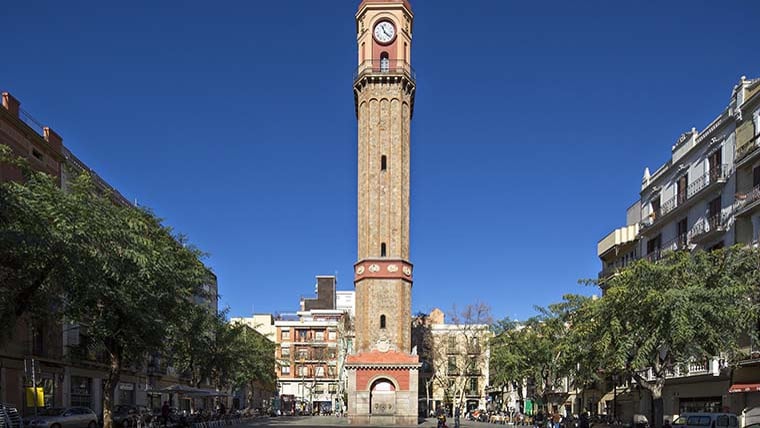One of the most iconic activities that can be done during the Festa Major de Gràcia is the visit to the Clock Tower, located in Plaça de la Vila. This activity offers a unique opportunity to enjoy panoramic views of the neighborhood from this emblematic structure. During the festive period, which lasts until August 21, the Gràcia History Workshop association organizes guided tours at different times.

The Clock Tower
The Gràcia bell tower, built in 1864 when Gràcia was still an independent municipality, became a historical landmark during the Revolt of the Quintas in 1870, when its bell rang in support of the rebels. This bell, known as Marieta, was named after the neighbor who rang it by means of a rope tied to her terrace.
Not to be missed concerts at the Festa de Gràcia 2024
According to Arun Solana, a member of the Gràcia History Workshop and Study Center, “this monument has had a very significant impact on the collective consciousness of the community and today it is one of the most representative symbols of the neighborhood.” Visits to the tower resumed two years ago after being closed for more than two decades. For its part, the Festa Major de Gràcia is a celebration of tradition, culture and community spirit. A visit to the Clock Tower is a must-do activity that encapsulates the essence of the festival, offering residents and visitors a glimpse into the past and an inspiring perspective of Gràcia’s future.
An icon of Gràcia
The Gràcia bell tower, also known as the Torre del Rellotge, is a distinctive symbol of the neighborhood. Designed by the architect Antoni Rovira Trias, it was commissioned by the town council of the Vila when it still functioned as an autonomous municipality. Located in the center of the square, in front of the town hall, the tower is inspired by Italian bell towers, characteristic bell towers located next to churches or public palaces.
Discover the magic of the decorated streets at the Festa Major de Gràcia 2024
The structure is topped by a clock with four dials, visible from any point in the village, and two bells. The largest bell, Marieta, played a crucial role in the mobilization of citizens during the revolts of 1870, 1873 and 1874. At that time, the bell tower was consolidated as a symbol of resistance and unity in Gràcia. The importance of this symbol intensified when popular pressure prevented the bells from being cast for the clock tower in Plaça d’Espanya for the 1929 Universal Exposition.
At 33 meters high, the tower exhibits distinctive elements such as a fountain with human-shaped griffins, the coats of arms of Gràcia, Barcelona, Catalonia and Spain on the four faces of the base, and twelve terracotta reliefs representing the zodiac, located on the central cornice. Originally, the pedestal was surrounded by three steps, which are now hidden due to the elevation of the level of the square.
Cultural identity
The Clock Tower is not only an architectural landmark, but also a reminder of Gràcia’s rich history and cultural identity. Over the years, it has witnessed crucial moments in the evolution of the neighborhood. This from its time as an independent municipality to its integration into the city of Barcelona. Guided tours during the Festa Major offer a rich visual experience. They also offer a connection to the past and the community spirit that has defined Gràcia for generations.
Benches on Barcelona’s Passeig de Gràcia are restored with graffiti patches by a street artist
In its beginnings, the Clock Tower was used to mark the passing of time. But it was also equipped with instruments for astronomical observation. In the 19th century, the study of the stars played a fundamental role in the precise measurement of time. Tower clocks were synchronized with astronomical clocks, adjusted according to the positions of celestial bodies. The Torre del Rellotge de Gràcia was an essential part of this synergy between the measurement of time on Earth and astronomy. Thus, it represented an era in which these two disciplines were deeply interconnected.
Image courtesy of https://ajuntament.barcelona.cat, all rights reserved.



